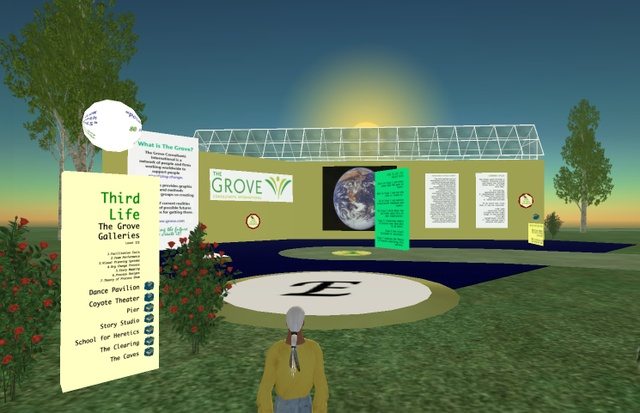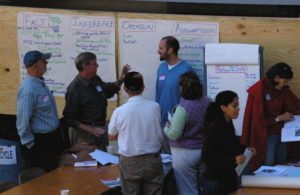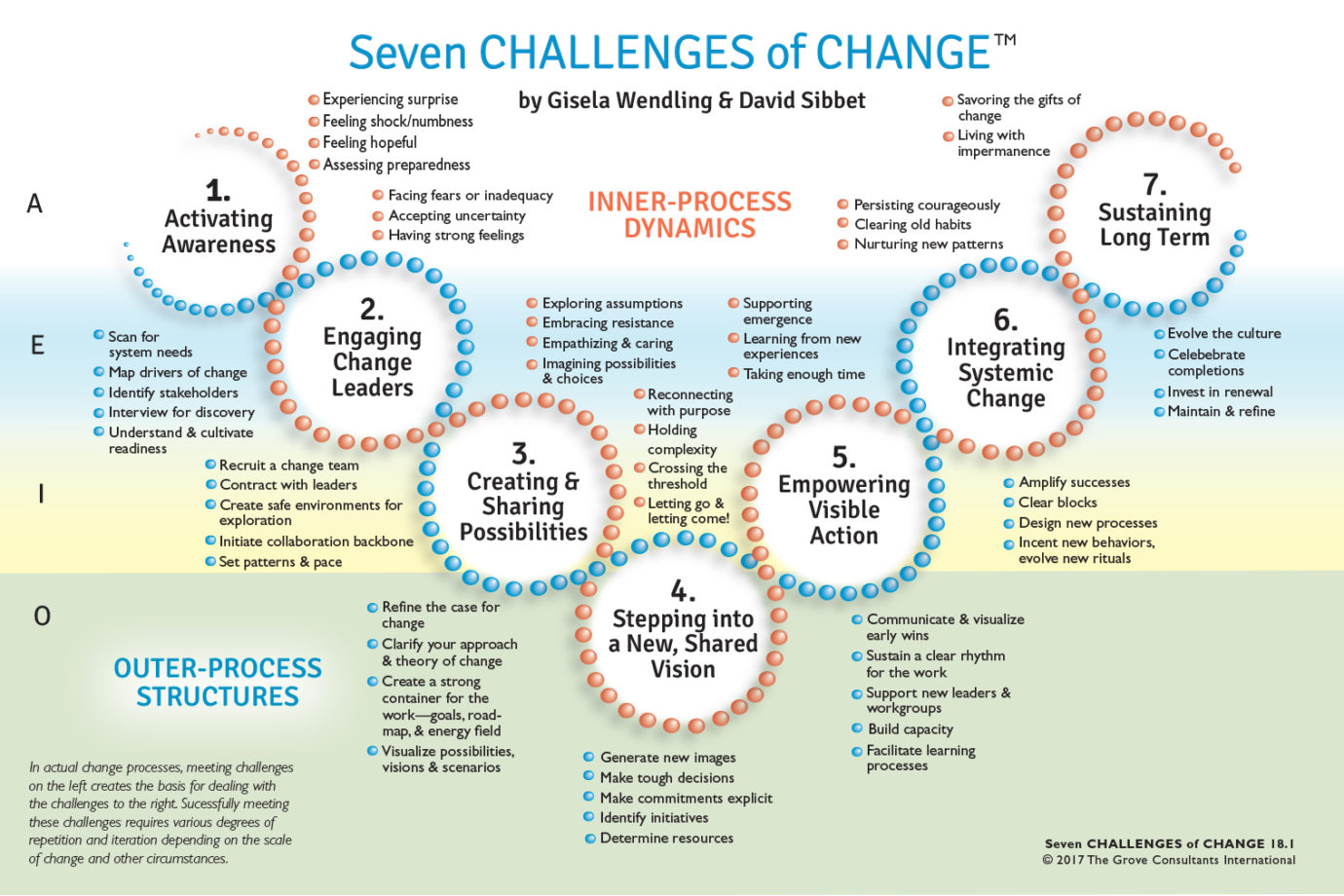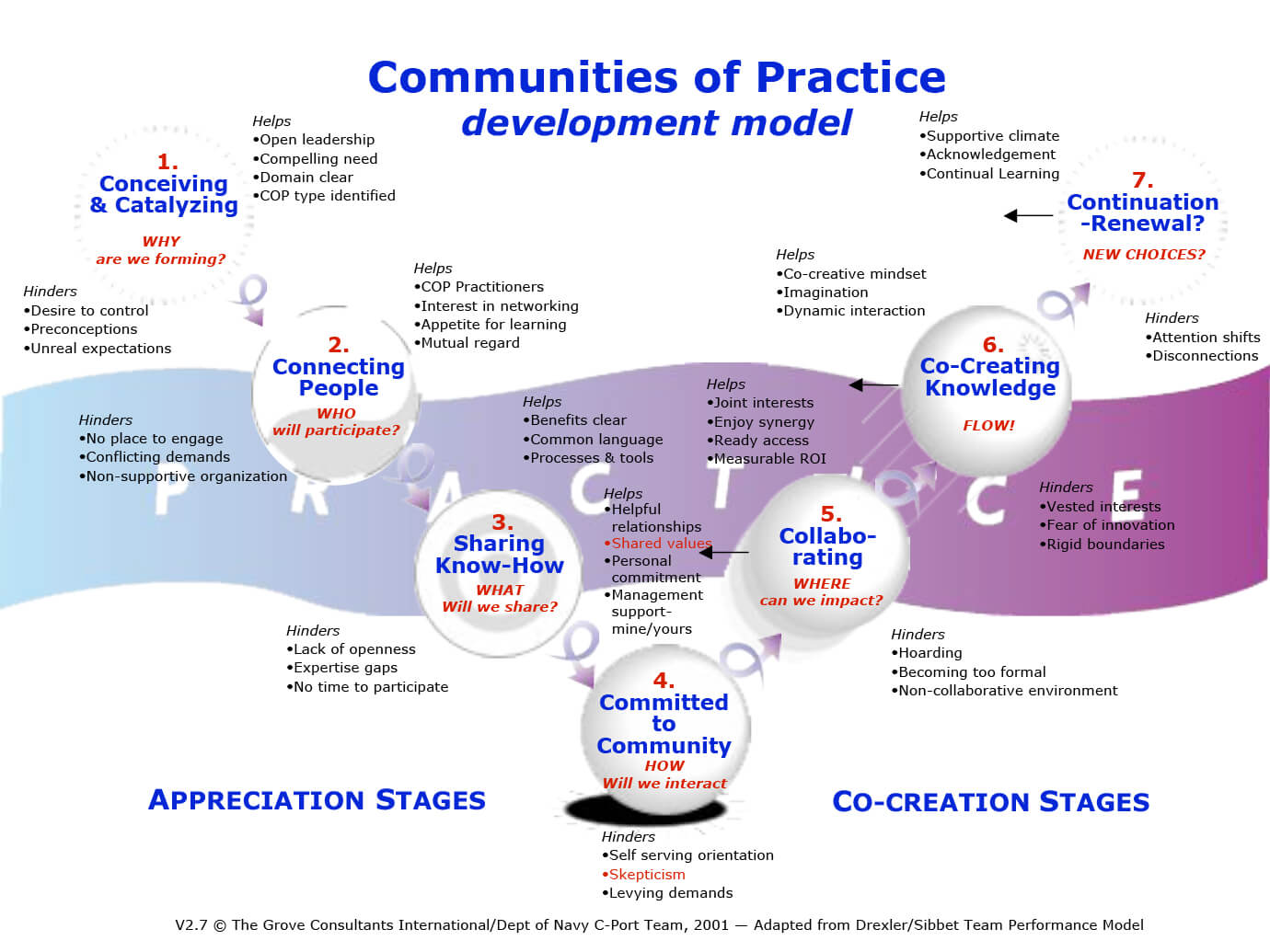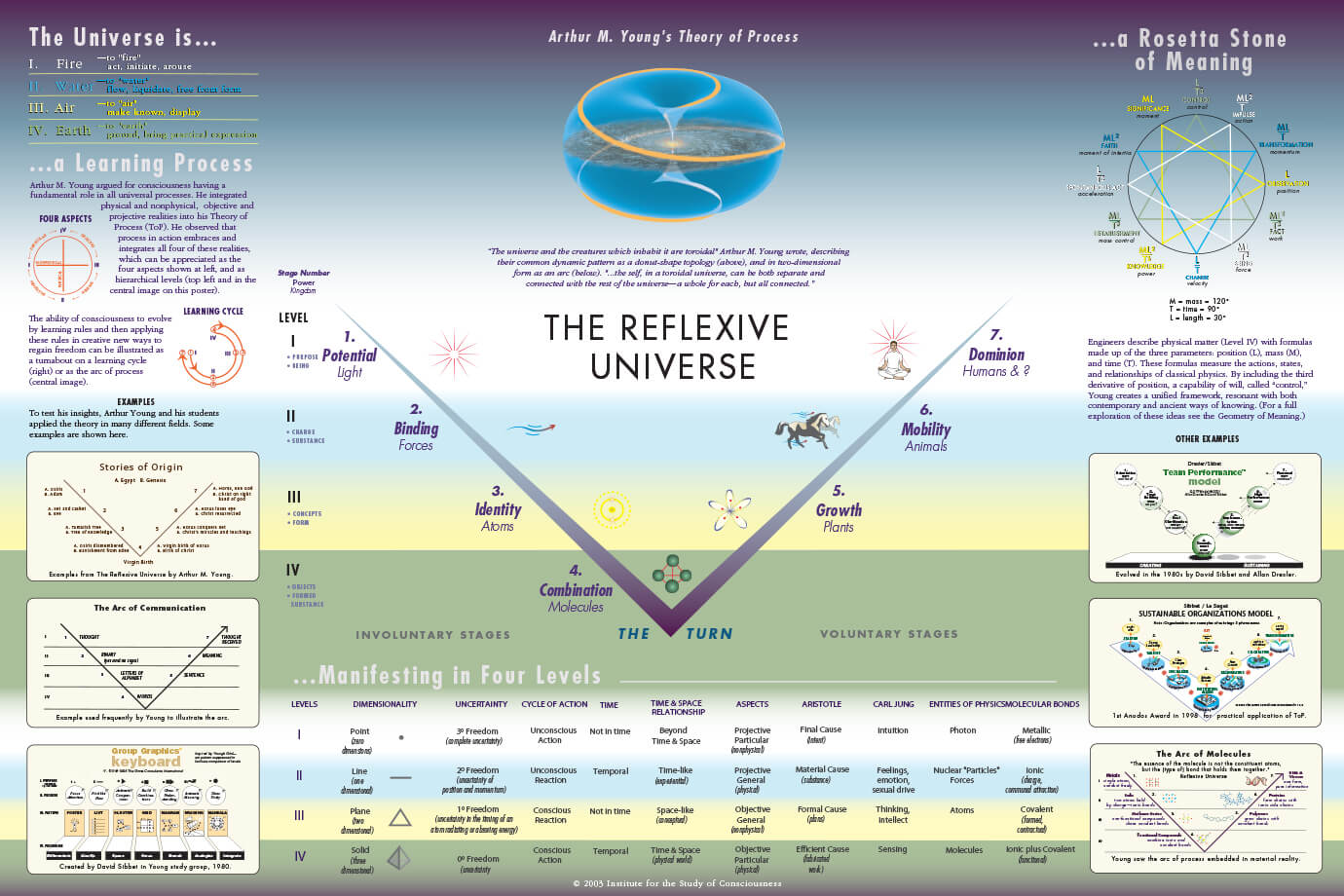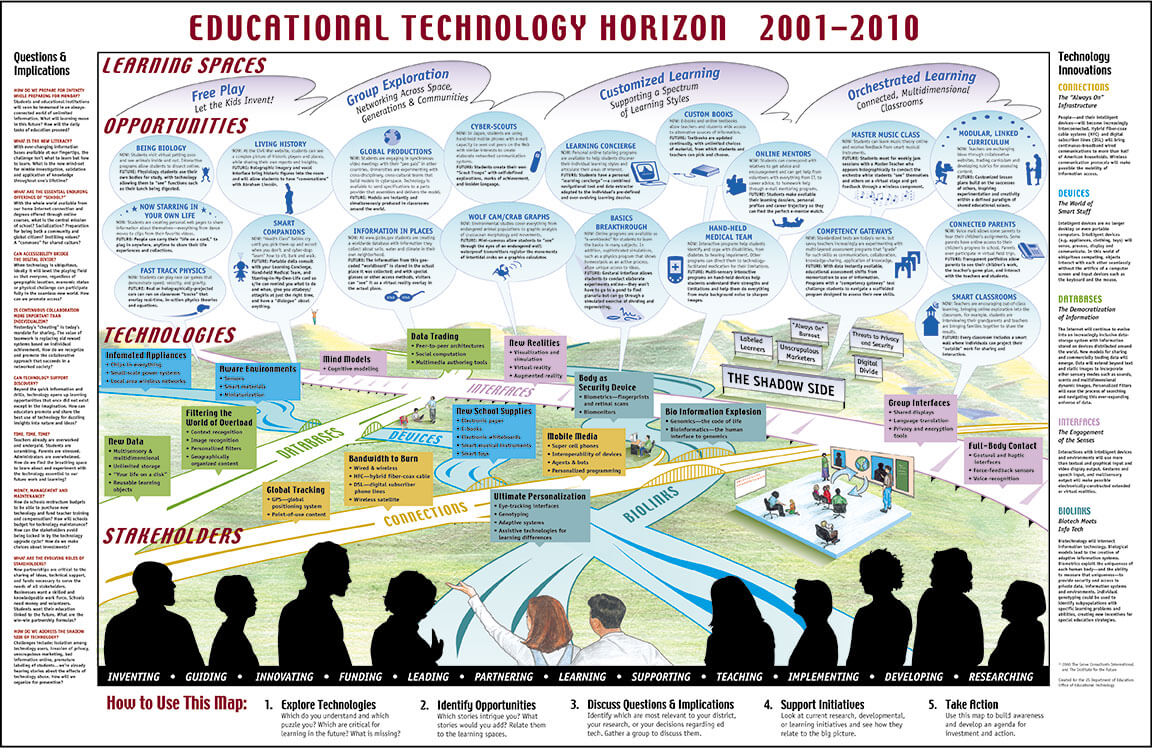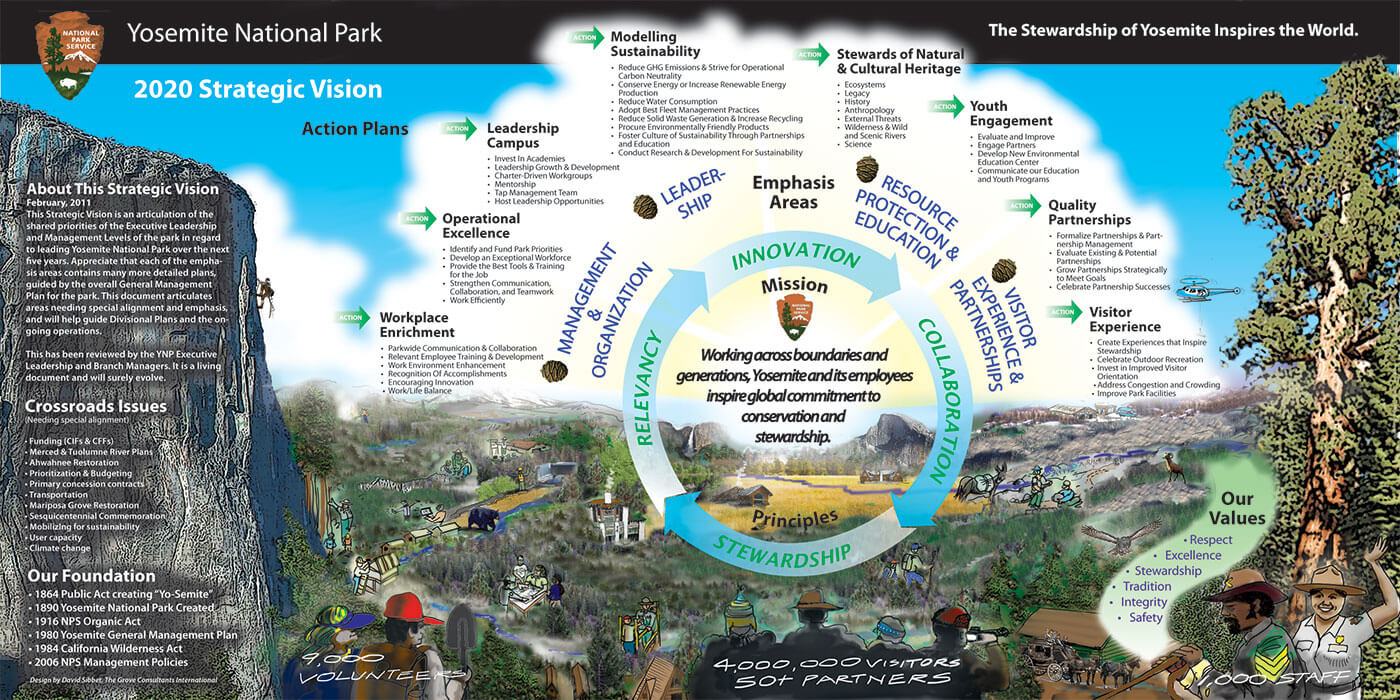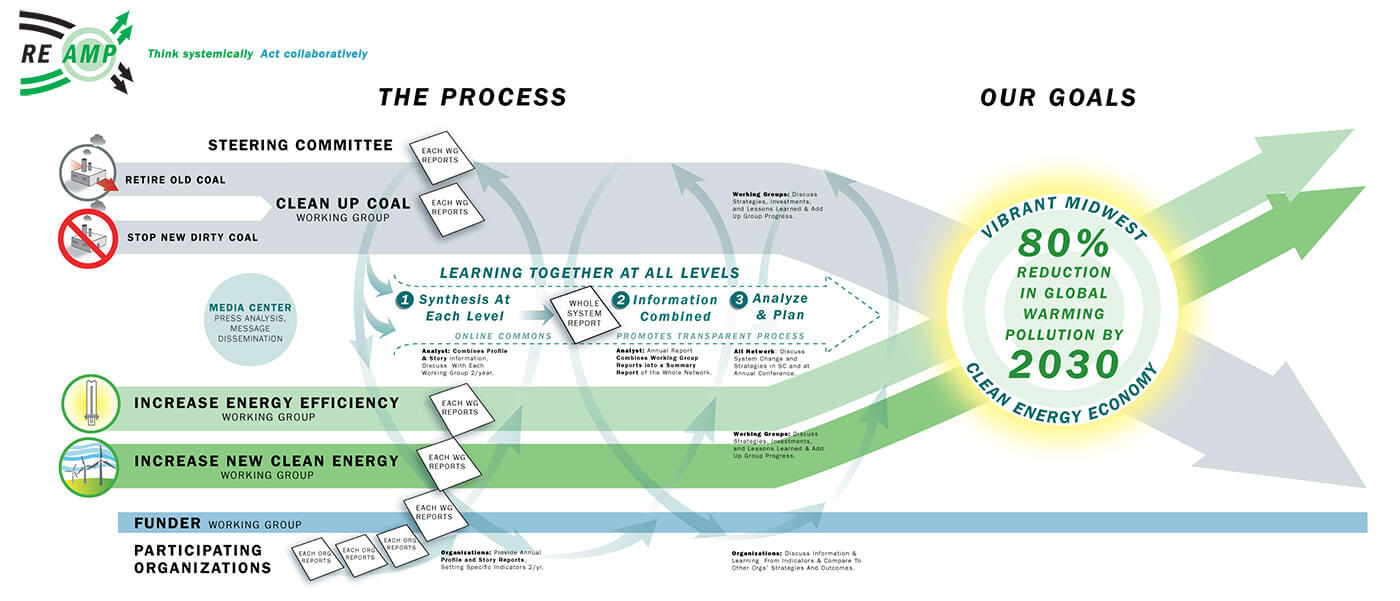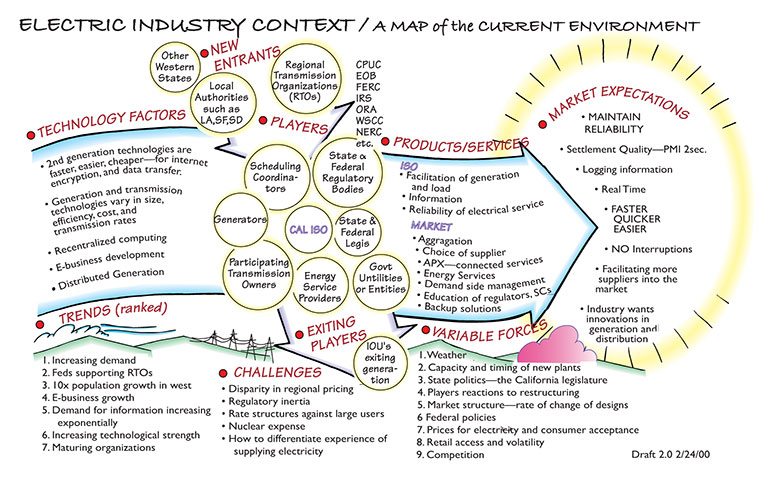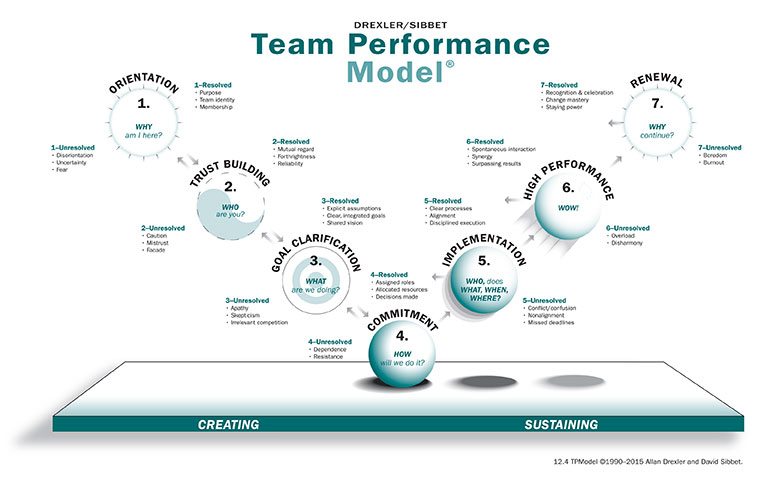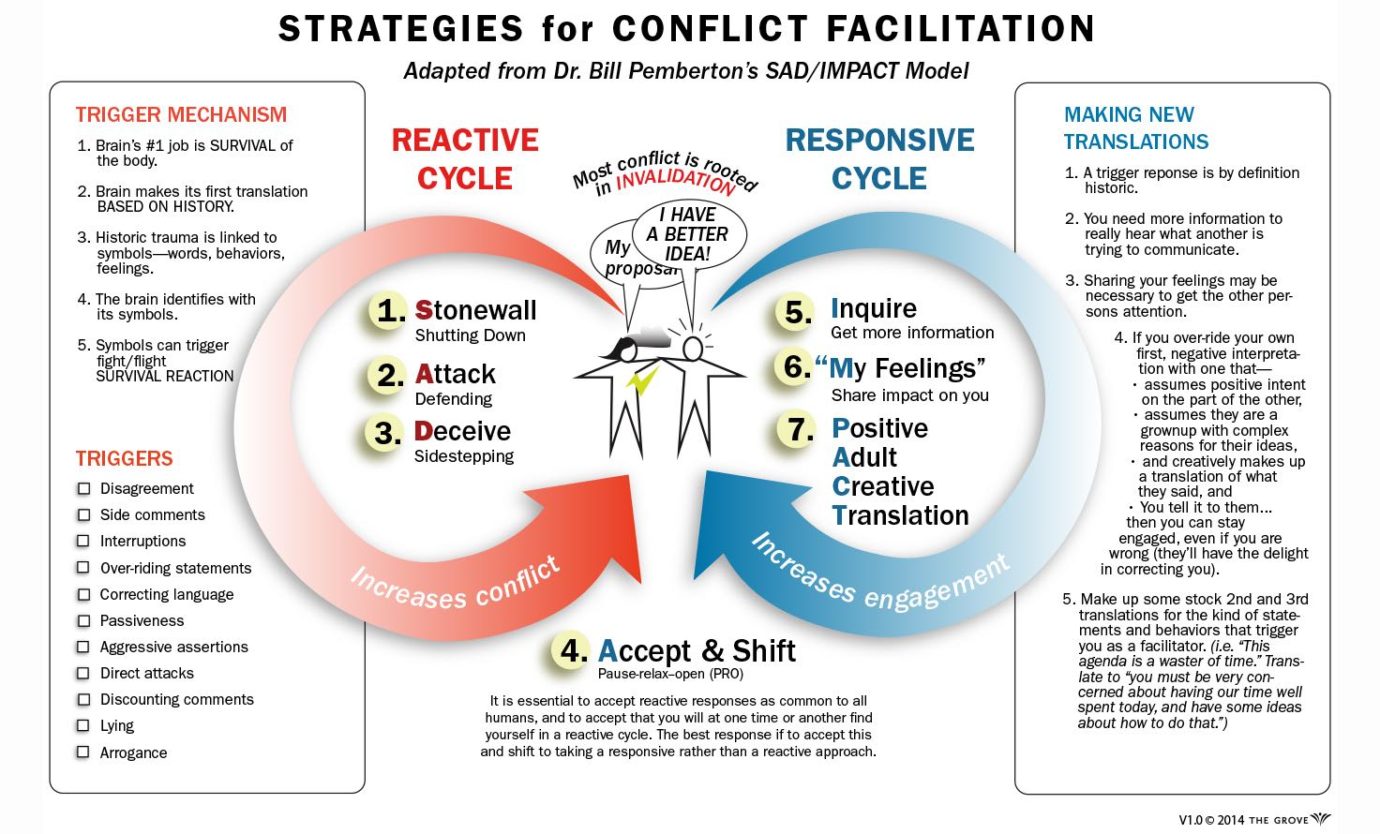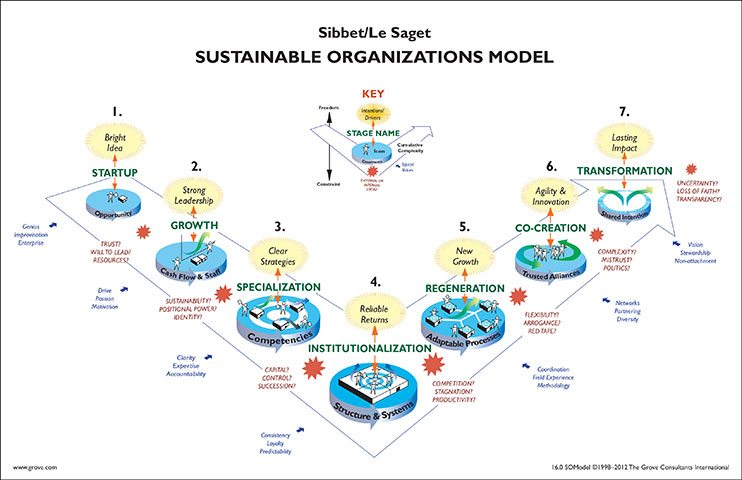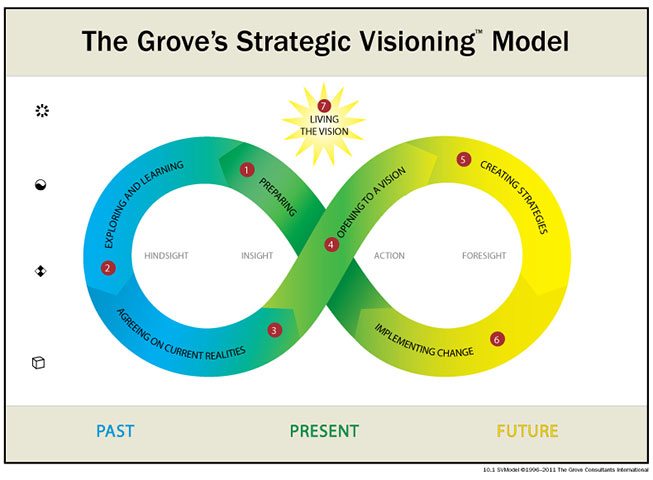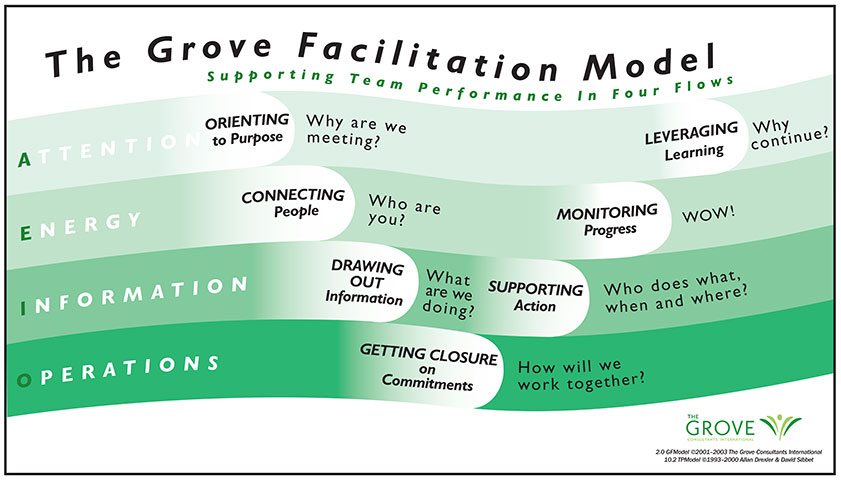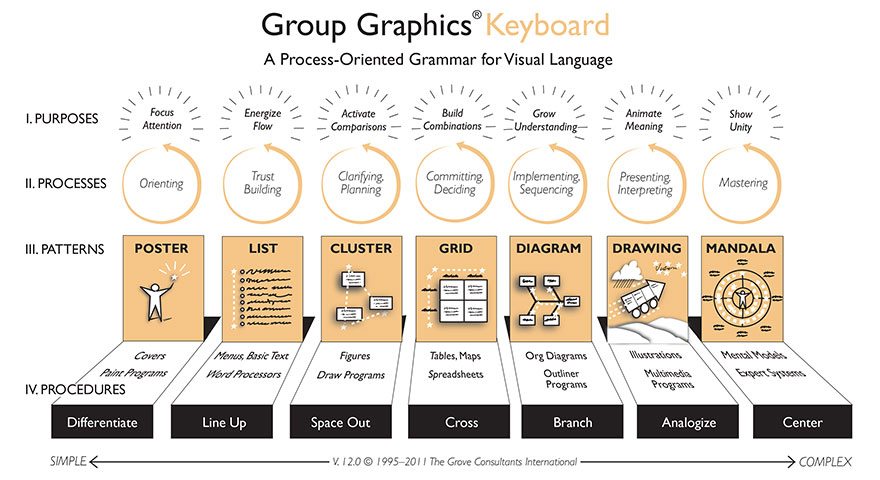The Board of Directors of HealthEast Care System in St. Paul, Minnesota decided on a big goal: being the “benchmark of quality in the Twin Cities” by 2010. Yet the medical staff and quality leaders were struggling to understand how they would achieve this. Dozens of well-meaning programs were in place, but overall integration and coordination were lacking.
HealthEast’s two directors of strategic planning and organization development thought that The Grove’s Storymapping and visual facilitation services could create a chrysalis for organization change and help align the organization. David Sibbet and a HealthEast leadership team set out on a large-scale mapping process, which led to the creation of a Quality Journey Map.
The content of the panoramic image was distilled from the initial three meetings with over five dozen key stakeholders. Then it was refined by divisional leadership in two dozen subsequent meetings. A cautious CEO became one of the biggest champions as he saw his board respond to this big Storymap™.
The Quality Journey Map made it easy for managers to explain how HealthEast began, where it was going, and how it intended to get there in regard to quality. It became HealthEast’s platform for decision-making and priority setting, a tool for orienting new employees, and a vehicle for alignment across the organization.
Craig Svenson, HealthEast’s chief medical quality officer, describes, “It created in one picture frame our past, present, and where we were headed. The one picture allowed me to explain in five minutes or an hour, to whatever audience, what was appropriate for them.”
The agreements made in the process of creating HealthEast’s Quality Journey Map got everyone aligned and focused on what to measure. By 2010 they had met their goal of becoming a “benchmark for quality” for health care services in the Twin Cities area.
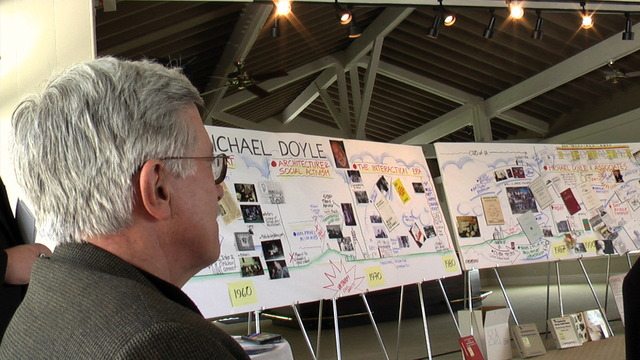


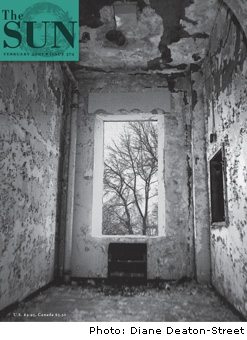 I recently read
I recently read 